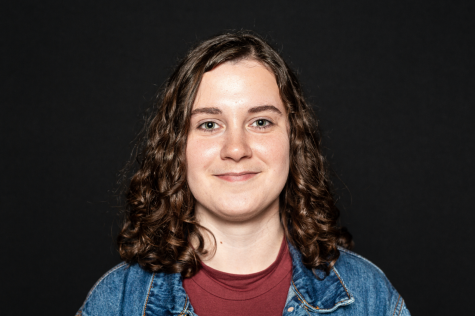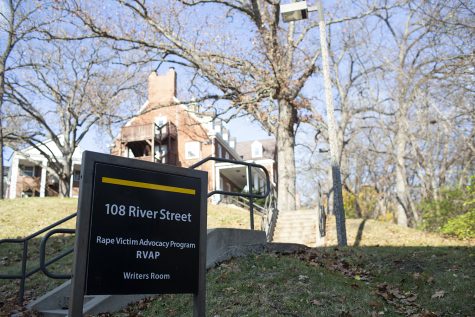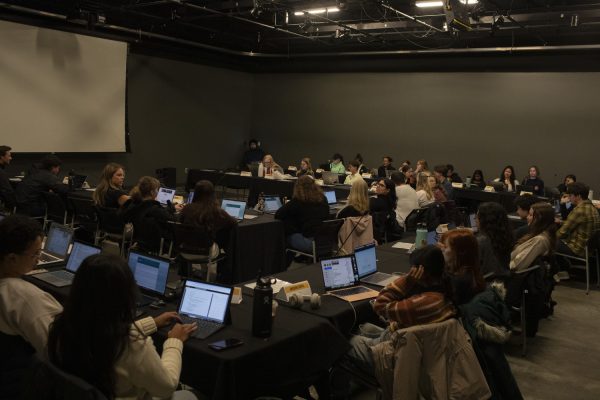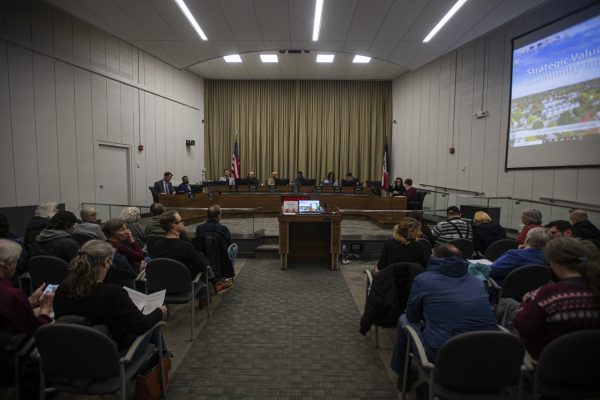Thinking globally about air pollution
UI Professor Gregory Carmichael discusses the effects of air pollution in the 34th presidential lecture.
Overhang from tree branches and leaves separates the blue sky from prairie plants growing next to crop fields on the Meade Family Farm in Tiffin on Tuesday, June 28, 2016. (The Daily Iowan/file)
February 20, 2017
On a February day with blue skies and a high of 72 degrees, the University of Iowa community came together to discuss the realities of climate change as a result of air pollution.Gregory Carmichael, a UI Karl Kammermeyer professor of chemical and biomechemical engineering, presented the 34th-annual presidential lecture, “What Goes Around, Comes Around: The Global Reach of Air Pollution” on Sunday in the Levitt Center.
UI President Bruce Harreld said the lecture was an opportunity to open dialogue in the community and to share Carmichael’s work.
“As large as we are at times, we don’t often within our community get to see others,” he said. “… That’s an opportunity here today to create some of that cross-communal dialogue.”
Carmichael’s lecture highlighted the global reach of air pollution and its link to climate change. He said the work he does has an immediate impact in improving operational weather forecasts and in expanding air-pollution modeling worldwide.
“The models that we’re building are also used in terms of thinking about the future,” he said. “What if we were to take a different path of energy or what if we were to [use] more electrical vehicles. These same models are used to dilute those scenarios and then to help inform policymakers.”
As carbon-dioxide levels increase and the atmosphere warms, Carmichael said, humans should feel a heightened sense of urgency in addressing air pollution. He said the human impact of air pollution includes reduced lung function, heart disease, and obesity, among a variety of other established and possible health effects.
“We tend to take for granted that our air quality is good, and we don’t have to worry about it here, for example,” he said. “It’s only a problem elsewhere.”
Much of the onus is on cities to push for climate change, Carmichael said, because pollution is highest in larger cities. The problem spans across the globe, particularly in India and China.
Weiqi Yuan, a UI student from China who attended the lecture, said the lecture reminded him of climate problems his country experiences.
“I came from … the part of China that never snows, and we got snow last year,” Yuan said. “… It’s good to hear what China is influencing, or how can China improve, how can America improve, how can the world improve as a whole to deal with these [issues].”
There have been attempts in the political sphere to address the reality of climate change, such as the Clean Air Act of 1970, which was the first U.S. attempt to improve the nation’s air quality, and the 2015 Paris Agreement, an international agreement to mitigate climate change.
Despite these actions, Carmichael said, serious steps need to be taken to avoid surpassing suggested carbon-dioxide levels by 2050.
“Without taking actions with [carbon dioxide] — and sooner rather than later, pretty significant ones — we’re going to run past that,” he said. “The next generations and their generations are going to have to deal with that problem.”















